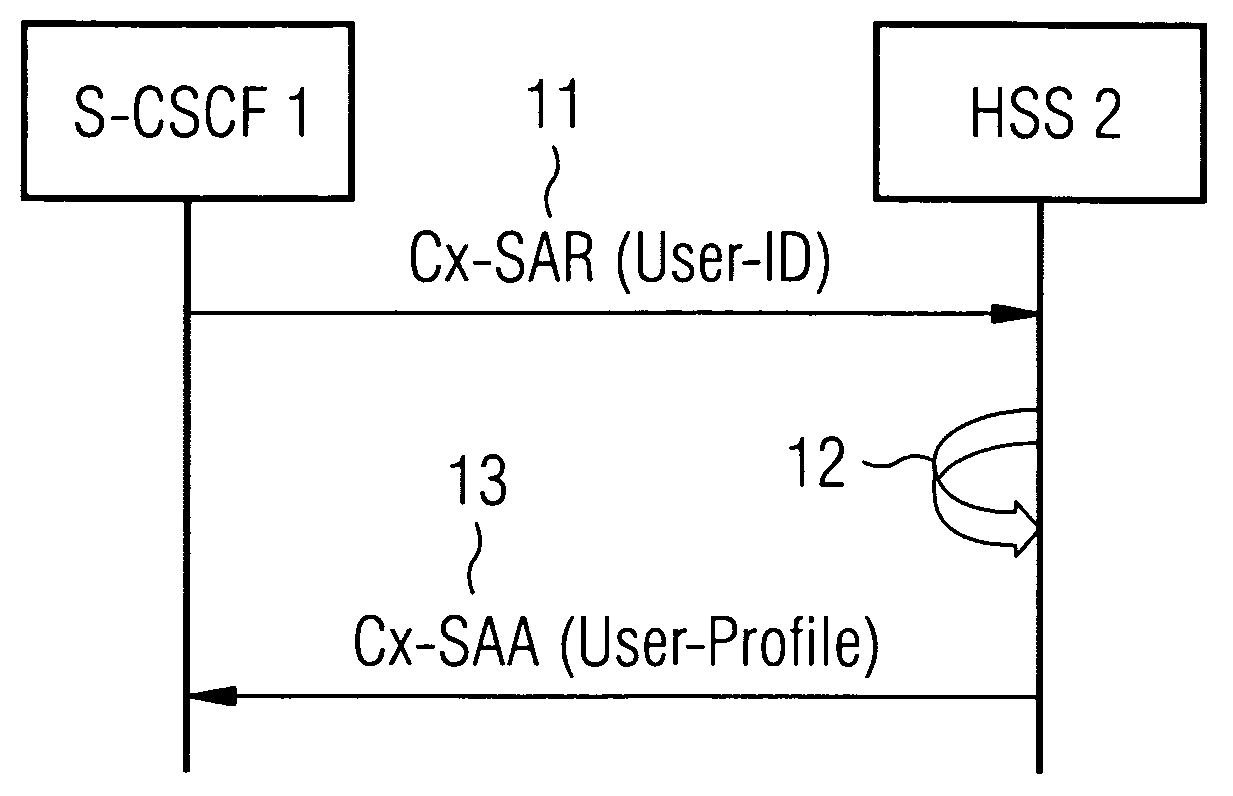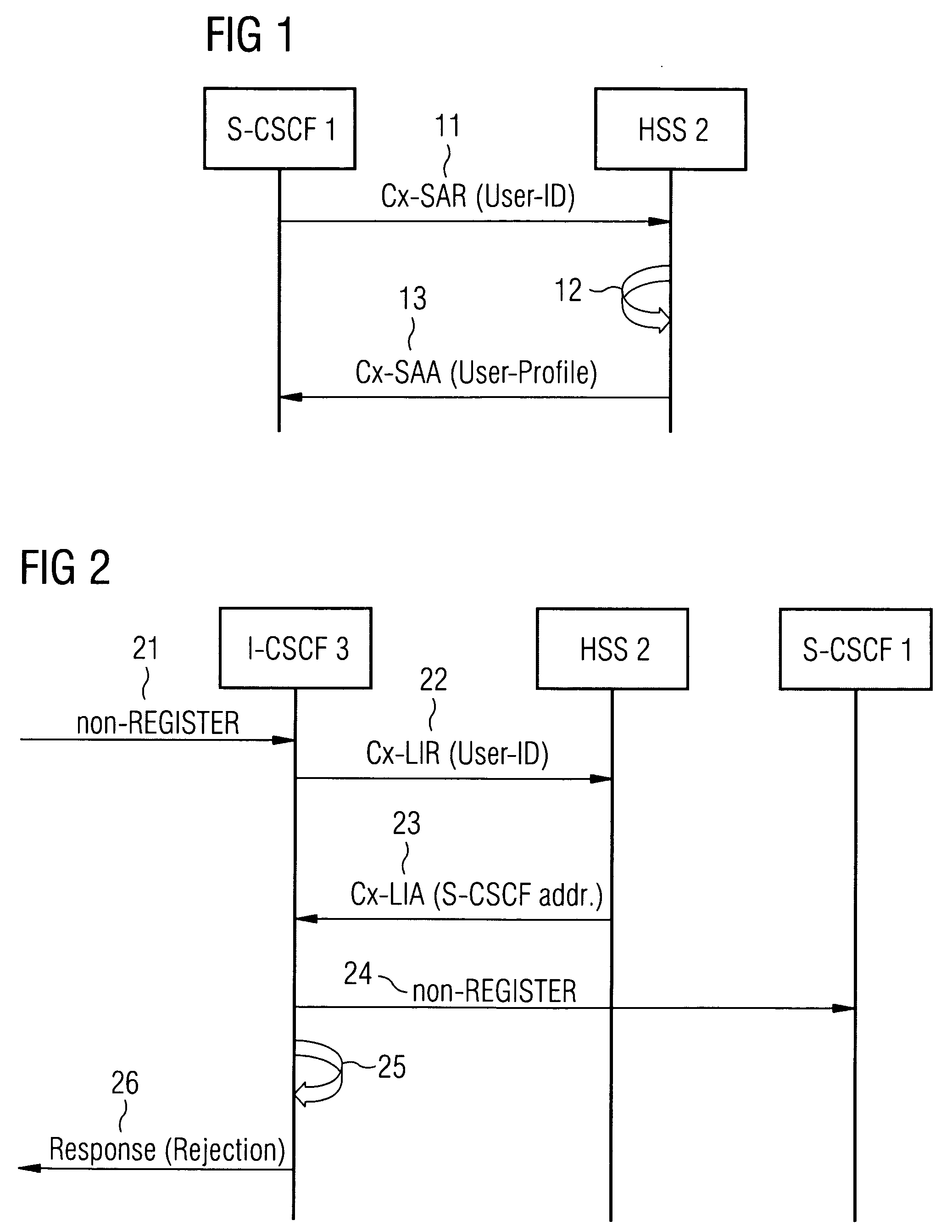Assignment of a serving entity in a communication system
a technology of a communication system and a serving entity, applied in the direction of data switching networks, digital transmission, wireless commuication services, etc., can solve the problems of unregistered users not being able to provide services for unregistered users, and unregistered users not being able to find a solution
- Summary
- Abstract
- Description
- Claims
- Application Information
AI Technical Summary
Benefits of technology
Problems solved by technology
Method used
Image
Examples
first embodiment
[0054]According to the invention, the HSS 2 shall monitor the availability of S-CSCFs and remove the assignment of an unavailable S-CSCF to an unregistered IMS user when Cx-LIR query is received for that user.
[0055]The HSS may monitor the availability of S-CSCFs by various means, for example over standard Cx interface, e.g. using the connection state (close or open) for the Diameter connection between the HSS and each S-CSCF, or by sending a Cx-PPR request containing unchanged user profile to each S-CSCF. Lack of appropriate response to from the S-CSCF may be interpreted as the S-CSCF is not available. If an S-CSCF assigned to an unregistered IMS user is not available, the HSS shall remove the S-CSCF assignment so that a new S-CSCF may be selected by the I-CSCF for the unregistered IMS user as described in connection with FIG. 3 before. To avoid possible load burst caused by removal of the S-CSCF assignment for all unregistered IMS users assigned to the unavailable S-CSCF, the HSS s...
second embodiment
[0058]In the invention, the situation is improved by introducing the S-CSCF re-selection procedure in the I-CSCF when the previously selected S-CSCF is unavailable. When the I-CSCF 3 selects an S-CSCF 1 for the IMS user, it may happen that the selected S-CSCF is not available; however, the I-CSCF 3 may still not be aware of the unavailability of the S-CSCF. As shown already in steps 25 and 26 of FIG. 2, the I-CSCF 3 must reject the SIP request if no service or response is received from the selected S-CSCF. According to this embodiment of the invention, the I-CSCF shall try at least one other S-CSCFs if the originally selected S-CSCF is unavailable. In one aspect of the invention the I-CSCF shall check that the newly selected S-CSCF is not one of any S-CSCFs selected previously for the same SIP request. In further aspect of the invention the I-CSCF shall only reject the SIP request if all S-CSCFs are unavailable for the request.
[0059]FIG. 5 presents the signaling flow and functions o...
PUM
 Login to View More
Login to View More Abstract
Description
Claims
Application Information
 Login to View More
Login to View More - R&D
- Intellectual Property
- Life Sciences
- Materials
- Tech Scout
- Unparalleled Data Quality
- Higher Quality Content
- 60% Fewer Hallucinations
Browse by: Latest US Patents, China's latest patents, Technical Efficacy Thesaurus, Application Domain, Technology Topic, Popular Technical Reports.
© 2025 PatSnap. All rights reserved.Legal|Privacy policy|Modern Slavery Act Transparency Statement|Sitemap|About US| Contact US: help@patsnap.com



